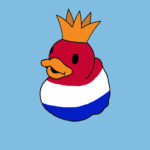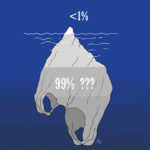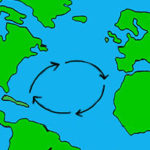What is ‘plastic soup’?
In 2015, more than 5 billion kilogrammes of plastic entered the environment. This plastic doesn’t all stay on land either; part of it enters the oceans. This is what we call the ‘plastic soup’.
No floating islands of plastic, but rather a watery ‘bouillon’
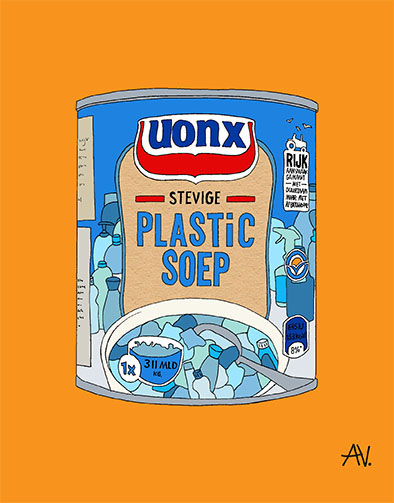
The plastic soup: now still a watery ‘bouillon’, in 50 years’ time a solid soup??
The term ‘plastic soup’ refers to all of the plastic polluting the ocean; the plastic bags floating on the ocean surface, as well as the micro- and nano-plastics in the seawater. None of this plastic forms floating islands in the ocean, however. On the contrary; less than 1% of the plastic in the ocean 1 can be found floating on the surface. The rest of the plastic floats deeper in the ocean, or sinks to the sea floor. So rather than plastic islands floating in the ocean, it’s more like a watery plastic bouillon.
Captain Charles Moore came up with the term ‘plastic soup’
When Charles Moore sailed from Hawaii to Southern California in 1997, his course took him through the gyre in the Northern Pacific Ocean. Every day, he saw pieces of plastic floating in the water. It seemed as if that location had much more floating plastic than other parts of the ocean. Since the plastic isn’t limited to the surface, but also floats deeper in the water, he called the phenomenon ‘plastic soup’ 2.
[well size=”sm”]
We could cover the Netherlands 155x over with all of the plastic in the oceans.
The total amount of plastic in the ocean is estimated to be between 86 billion and 239 billion kilos 3 4. But it’s impossible to know the exact amount, because we don’t know enough about how much plastic is located in the deep ocean or on the beaches.
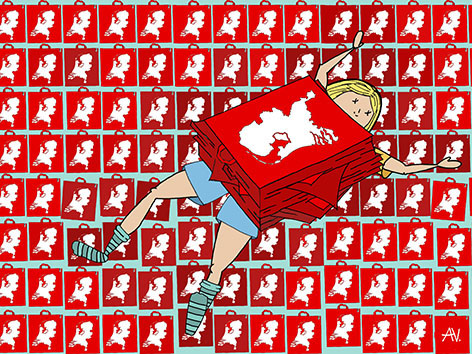
155 layers of plastic cover the Netherlands.
Let’s calculate how much 86 billion kilos of plastic really is: A plastic shopping bag from the supermarket weighs around 3 grammes. That means 86 billion kilos of plastic could make 28,667,000,000,000 shopping bags. All of those shopping bags have a combined surface area of 6,450,000 square kilometres, enough to completely cover the Netherlands 155 times.
We don’t see that much plastic floating on the surface, however, so where is it? That’s precisely the question scientists are trying to answer.
[/well]
[collapsibles]
[collapse title=”Sources”]
1 van Sebille, E. (2015). The oceans’ accumulating plastic garbage. Physics Today – Website
2 The plastic soup foundation – Website
3 Jang, Y. C., Lee, J., Hong, S., Choi, H. W., Shim, W. J., & Hong, S. Y. (2015). Estimating the Global Inflow and Stock of Plastic Marine Debris Using Material Flow Analysis. Korean SOciety for Marine Environment and Energy, 18(4), 263-273.
4 Ocean Conservancy and McKinsey Center for Business and Environment (2015) Stemming the Tide: Land-based strategies for a plstic-free ocean. – Website
[/collapse]
More interesting info…
